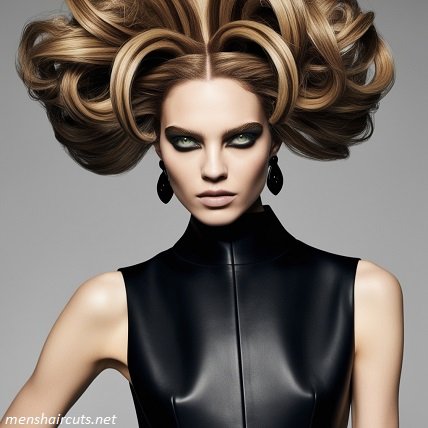Introduction
A timeless classic in the ever-evolving world of hairstyles, the taper fade strikes the perfect balance between modern sophistication and vintage flair. Admired for its adaptability and crisp lines, this hairstyle suits a variety of tastes and trends. The taper fade has something to offer everyone, whether of whether you’re trying to make a statement or just want to look polished and professional.
What is a Taper Fade?
A versatile cut, the taper fade involves gradually reducing the length of hair from the crown of the head to the sides and back. The taper fade offers a gentle transition that smoothly combines longer hair on top with shorter lengths on the sides and back, in contrast to a typical fade, which could display a more dramatic shift in length. This gentle gradient accentuates the head’s natural form while giving the look of gloss and refinement.
The History of the Taper Fade
The taper fade has a long history in barbering, having developed from vintage grooming methods and conventional military haircuts. The taper was first popularized by military personnel who frequently wore short, functional styles in the early 20th century. The haircut started to change when the fade element was added, giving it a more sophisticated and fashionable look.
Types of Taper Fade
There are various varieties of the taper fade that offer a distinct style to fit a range of face shapes and preferences. Just above the ears and encircling the nape of the neck, the low taper fade begins, producing a soft transition that keeps the sides longer. Starting at the temples, the mid taper fade offers a well-balanced fade that isn’t overly dramatic or subtle.
How to Choose the Right Taper Fade for Your Face Shape
It’s important to choose the right taper fade for your face shape if you want a balanced and attractive appearance. A high or mid taper fade can provide height to a round face, counteracting its roundness and making it appear more extended. A low or mid taper fade can help reduce angular features and produce a more rounded look, so people with square faces might give it some thought.
How to Achieve the Perfect Taper Fade
It takes planning, execution, and meticulous attention to detail to get the ideal taper fade. Start by having a full consultation about your preferences and face shape with your barber. This guarantees that the taper fade you’ve selected will enhance your unique features and style. Because preparation is key, make sure your hair is clean and manageable by washing and drying it before the cut.
How to Keep Your Taper Fade
Maintaining the glossy and new-looking appearance of your taper fade requires proper care. Trims performed every four to six weeks assist maintain the look and stop the fade from spreading unevenly. Choosing light style products that won’t weigh down your hair can help you preserve the shape and structure of your haircut.
Maintaining Your Taper Fade
Steer clear of typical pitfalls to ensure an effective taper fade. Avoid overdoing the fading to avoid an uneven appearance; a slow, organic change is preferable to a sudden one. Make sure that the top of your hair is clipped and styled to go well with the taper fade because neglecting it can take away from the overall appearance of the cut.
Conclusion
The taper fade is a statement of refinement and style more than just a haircut. Its adaptability and simple design make it appropriate for a variety of settings, including the workplace and evenings out. You can achieve a noticeable, polished, and new look by knowing the many kinds of taper fades, selecting the style that best suits your face shape, and according to care guidelines.
FAQ
Read more about: oncloudshoes.org
How often should I have my hair cut in a taper fade?
Plan a trim every 4-6 weeks to maintain the best-looking taper fade. This will stop uneven growth and preserve the sharpness of the fading.
Can I use my home to achieve a taper fade?
Although a taper fade can be done at home, it’s advisable to have a professional barber do it to guarantee an accurate and well-balanced finish.
What distinguishes a standard fade from a taper fade?
A standard fade may have a more pronounced contrast between the longer hair on top and the shorter sides, but a taper fade includes a gentle transition in hair length.

